
Endocladia muricata
Nail Brush Seaweed, Sea Moss
Harling Point, Juan de Fuca Strait, British Columbia, Canada
8 January 2021
Observed 3:30 to 4:45pm PST
Low Tide 2.6 feet at 18:14 PST (measured at Oak Bay Tidal Station)
Tide level during in situ interactions: 3.8 feet
Weather: Mostly clear (5% cloud cover), no precipitation, wind SW 15 diminished to SW 5km/hour, light chop with a low SW swell, temperature 8˚C, relative humidity 75%.
Phase of Moon: Waning Crescent (approx. 63 hours into this phase at time of observation); (Previous Phase, Third Quarter, 6 January 2021 at 1:37am PST: Next Phase, New Moon, 12 January 2021 at 9:00pm PST.)
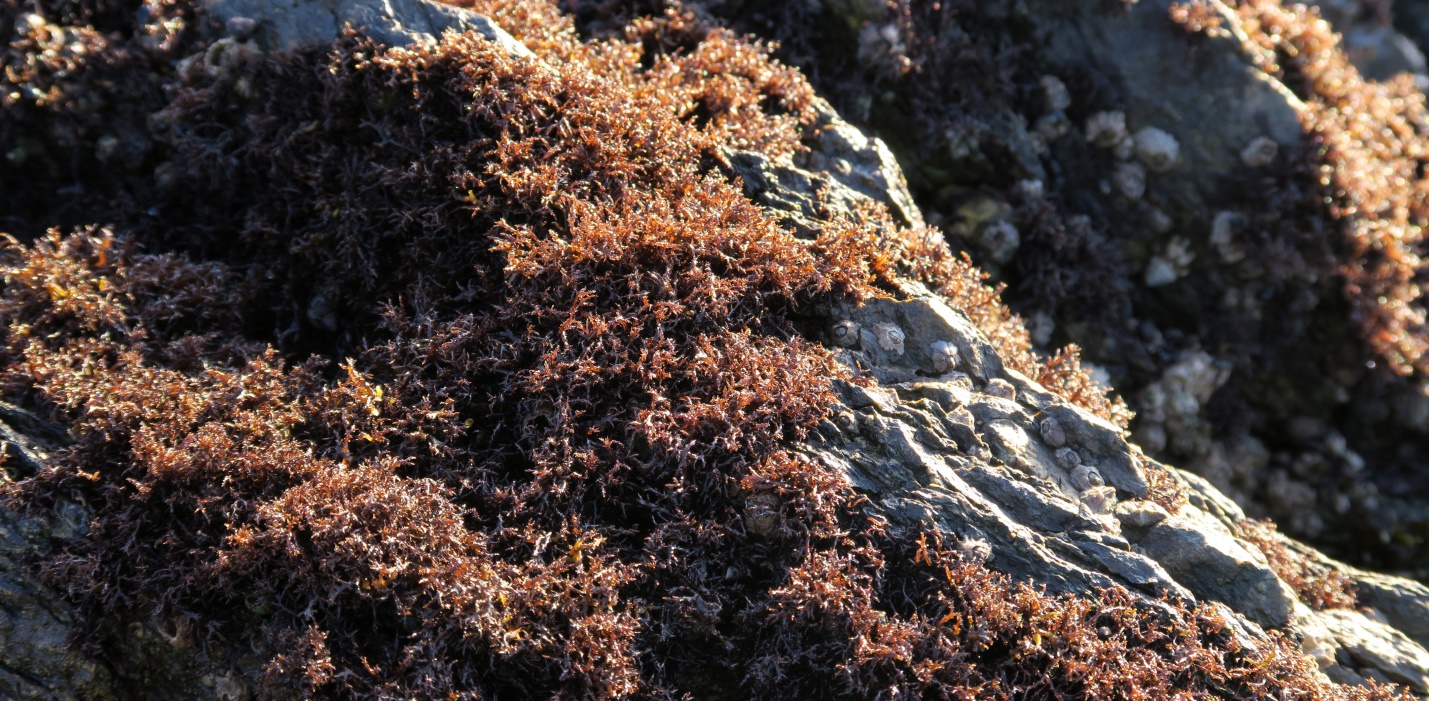
Figure 1: Endocladia muricata, Nail Brush Seaweed – shown here as a “mossy” looking carpet growing over the craggy bedrock. Harling Point, Juan de Fuca Strait, B.C., Canada. January 8, 2021. Photo ID 27342 ©Seaweedwhisperings.com
In situ observations:
We interacted with/observed this seaweed in the high intertidal zone on a surf-pounded rocky outcrop. Observations were done in situ with the living seaweed.
Person 1:
The mass of Nail Brush Seaweed looks like a dense fur coat, a bit messy, fuzzy.
It is comfortably exploiting the available habitat.
I’m content to admire it from a distance.
It will take me a while to get to know it.
Maybe it doesn’t want to share what it knows.
Safety in numbers? Forms dense mats of many individual plants.
Greenish-brown in color, shows a bit of purple in the sunlight.
I had been wandering around the immediate area and was looking at the Nail Brush Seaweed in different places; perhaps I was awaiting an invitation for closer interaction, a signal such as, “Hello, come on over.”
About ten minutes later, I got the sense there was a “come on over” energy and I thought, “I think it’s time to get to know it better”.
Was expecting it to feel rough, but it was surprisingly soft, matching its fuzzy appearance.
Under magnification I see a complex array of branches.
When I brush a tuft of Endocladia, it immediately returns to its original position – very resilient – doesn’t seem to mind being touched or brushed.
Attempted to “eat” it – fuzzy, furry feel in my mouth – not at all appetizing.
No taste.
No smell.
Grows high in the intertidal with few competitors. Lives in its own world and content there?
Dominates the landscape where it grows.
Likes to be anonymous.
Well grounded – not easy to dislodge.
Doesn’t mind interacting with me, but isn’t going to share much.
Looks very much alive out of the water – not stressed compared to most other seaweeds when they are exposed.
Enjoyable interaction, totally un-stressful in the field.
I felt very comfortable in Endocladia’s environment. This is somewhat paradoxical because it looks like a precarious existence with swift ocean currents, crashing surf, jagged rock formations and sharp barnacles. This seaweed faces challenges – predators, hot sun and weather, but in spite of this it is able to comfortably withstand the challenges. These challenges are everyday ‘normal’ so Endocladia doesn’t pay them much attention at all.
It has patience. It had patience waiting for us to do a Whispering – we’d been talking about this for at least the past six months. It was content to wait, the attitude seemed to be, “We’ll still be here” and “We’re not going anywhere”.
Considering your name, “Nail Brush”, looks like the teeth of a fine brush.
And your scientific names, “Endocladia” – makes me think of a self-absorbed person, quietly self-centered; “muricata” – no association.
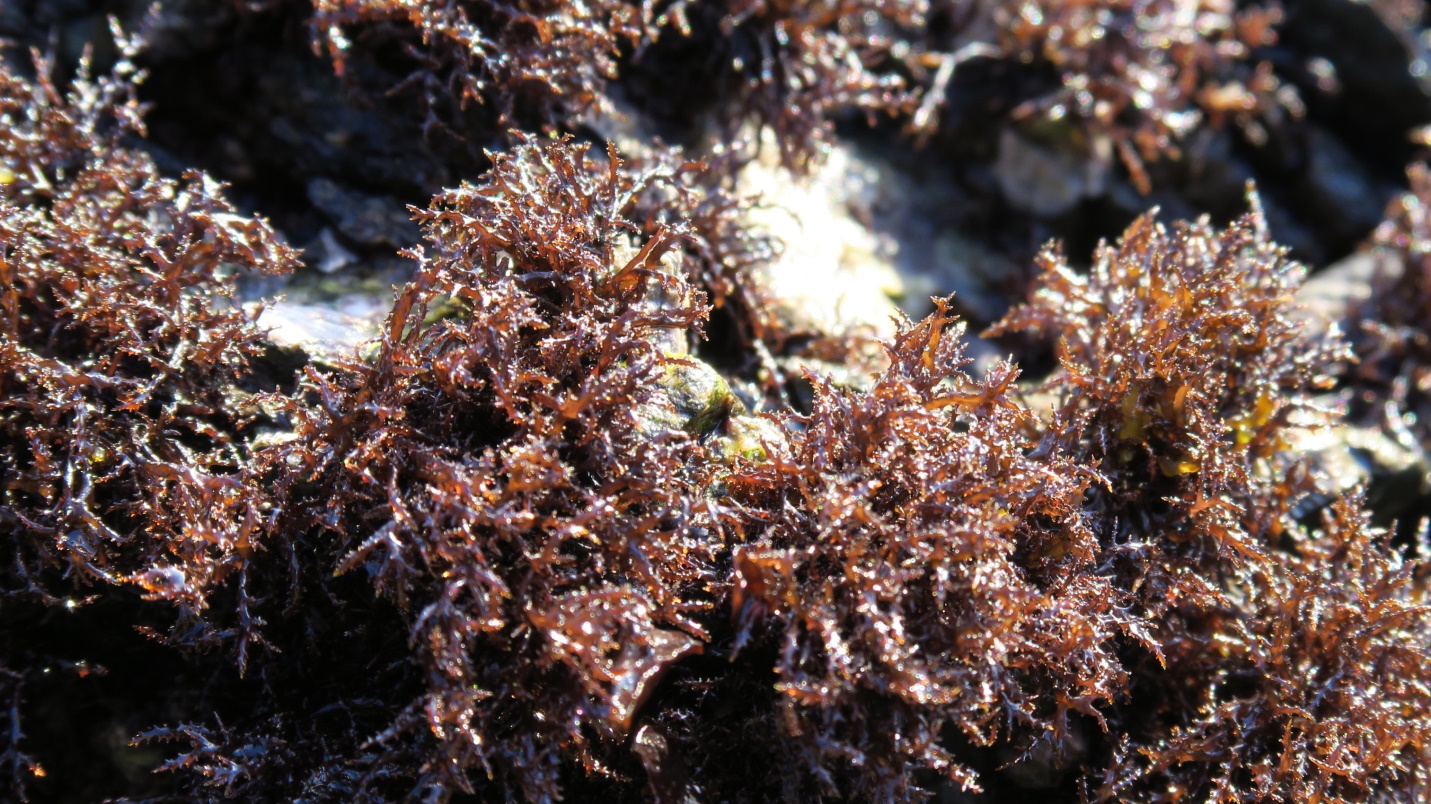
Figure 2: Endocladia muricata – a closer view of several plants growing on the rocky coastline at Harling Point. The spiny ‘briar patch’ look is evident here. Harling Point, Juan de Fuca Strait, B.C., Canada. January 8, 2021. Photo ID 27343 ©Seaweedwhisperings.com
Person 2:
Here we join you, on the bedrock outcroppings, right adjacent to the Pacific swell that has been stirred up by the westerly wind.
I think one has to be tough to live here in the splash zone, where you are much of the time above the tide and exposed to all weather conditions. Splash again, now! Salt water sprays the rocky bluff here.
Endocladia muricata, you cover the rocks – like a dark burgundy brown moss.
You stay low – keep a low profile. Or is it that your challenging environmental circumstances trim you down?
“Lean and mean” – no higher than the elements and the grazing snails will permit.
Trimmed back, yet persistent. You endure and you grow back again.
Your neighbors on the rocks here are mostly barnacles and some bits of Fucus seaweed.
Do the barnacles help you out a bit? Give you some sheltered space on the rocks? Or do you simply tolerate each other – fellow hardy souls! I think it is more a case of mutual tolerance mixed with the occasional territorial spats.
I touch you and you’re very soft.
You’ve been immersed earlier today; the tide is just now retreating. How long would it be until these winds dry you out?
Test your ability to be NOT immersed?
Test YOU…?
Yes. Many things do test you!
I think you stand up to the test. Always do your best.
Are you pleased with your best? Sometimes, yes; many times, though, I think there is no time for self-evaluation or review, because a new test arrives to challenge you yet again. So growth in ability is occurring but your own appreciation / recognition of that lags behind quite a bit.
You live in the everyday situation of relentless or repeated tests coming at you.
The color of you when you are backlit is a glowing caramel brown is quite beautiful to behold. Otherwise you look deep dark chocolate brown in color with distinct red undertones.
In yet other circumstances the light catches you and look silvered – silver on that dark brown blackish purple; this lends a more black and white feel to your coloration, a much starker look.
Your coloration can, indeed, really seem to vary.
Or is it simply about how you interact with light? In one type of light you are warm and colorful and glowing, in another type you are devoid of color and almost dead-looking, like a dried out mass of miniature prickles (this texture is reminiscent of tumbleweed, Kali tragus, nothing but bare stems with prickles), and in yet another type of light you are simply very dark and any details are very difficult to see.
With the hand lens, viewed close up and magnified, you look like a mini briar patch.
It’s almost as if your tiny branches have zigged and zagged and been reduced to tiny points.
At the end of your stems I can see some branchlets with a bit of length to them - these grow roughly opposite each other like tiny V’s giving your outer limits a much branched look.
Your branch tips end in points, too.
Your overall look, when magnified, is much more pointy and spiny.
I press down on you, and in your current well-hydrated state, your stems cushion my hand from the rocks beneath. And as soon as I remove the pressure of my fingers you bounce back – bounce right back to your former position.
I try to run my fingers through and you feel sort of woolly.
The mass of your stems and branches is rather tangled, like hair that hasn’t been combed for some time.
There’s not much length to you.
The longest thallus I find here is about 1.5 cm.
Your stems are barely 0.25 cm thick.
I pluck a wee bit of you easily from the rock.
I next chewed a bit of Endocladia. It has a very wiry texture; tough and wiry. Abrasive like a scouring brush – yes, or a nail brush.
I spit you out; it is unpleasant to think of you in my throat – scouring my throat if I had proceeded to swallow you.
My maceration has not changed your form much, either.
No taste – only very faintly of the sea.
Black Oyster catchers are around here often (this is the third time already I’ve noted them during our interactions). These noisy shorebirds are your companions in this environment, aren’t they? They too are black and brown colored with highlights of red. Their cries always seem to communicate some distress whereas you, Endocladia, seem very at home with the same circumstances.
The surf is splashing more right now – it has such power and you live in harmony with that power, Endocladia. You certainly have much more peace with this power than I do – a visitor here in this environment. I am aware of the dangers of the crashing surf – you meet that danger routinely.
As the sun sinks towards the horizon your ‘red’ shows more.
Do you do best in gentle or low light?
Splash! Some spray showers you. Externally you seem almost completely indifferent to this, but internally I feel you are grateful to receive it. You can put the life giving seawater to use.
I move to a different location on the rocks – an area just away from the buffeting surf and here I find the periwinkle snails. Actually first I noticed the Nail Brush was shorter here and then I saw the periwinkles and immediately recognized the reason for the shorter stature – the snails have been grazing. It seems they chose areas to feast that were not dangerous to them (safe from being washed off by waves; indeed, the checkered periwinkle will even drown when immersed so it stays high above the tide just like Endocladia muricata).
In the summer I’ve seen Nail Brush Seaweed heavily grazed by these snails – but obviously it can grow back well.
You must be perennial. Certainly your energy feels that way; I suspect your biology will agree.
Maybe the pruning / grazing of herbivores doesn’t really harm you. But this past summer when I saw this happening it felt to me like you were helpless against the snails’ appetites and that they had shorn you perilously close to your holdfasts. The snails were so numerous then that it felt to me like they had overwhelmed you, ganged up on you, and that all you could do was endure – it’s the sense that the best you can do is “grin and bear it”.
Seemingly defenceless, you are vulnerable to the whims of the snails’ appetites. However, it seems to work for you, Endocladia, to be trimmed back so severely but it also seems that this is rather harsh – like you’re in “boot camp” with a very tough trainer, one that pushes you almost to the point of death. With this assault by the hungry snails, it seems like all you can do is endure, endure, and endure.
In those long summer days I recall that your texture was also much more brittle feeling. The touch of you was not soft at all. Few tides immersed you then, and it was for shorter times if or when they did, giving you only very brief opportunities to rehydrate.
You felt like an abrasive “nail brush” on the rocks then – so very dry and crisp and brittle and hardened.
Brittle is a perilous state for you, yes, because then you are hardened but also prone to shatter easily. This harms you as much as grazing does.
Hardened – is that how you need to be?
Is that your response, your adaptation? Various kinds of hardness may reflect your ultimate stress point?
Life tests you and you toughen up and harden yourself and “steel” yourself to meet the tests.
You could be compared to steel wool – an abrasive polishing fiber.
What would YOU polish, Nail Brush Seaweed, if you had your way? If you were to follow your ambitions, if you were free to pursue your will?
I think you’d “polish” your own self. And a very private and internal affair this would be.
You’d polish your own efforts, you’d have them be as good and fine and as perfect as you could make them and your own standards are tougher than any outsiders might be. But you don’t get to do this, no, not ever really; you never seem to have sufficient time before another challenge confronts you, interrupts you.
And you do not shirk from a challenge! That is not in your nature.
It’s automatic and even necessary that you respond.
So you abandon your ‘polishing’ and must turn to this new challenge.
Your determination is strong.
You give it your “all”.
You’re not a quitter, but by outside measures it may not seem like you’ve made it very far. A casual look would see you not much changed – still trim and low growing to the rocks.
Externally you may not grow all that far and maybe not very high. But you’re certainly willing to try. Not much breaks you; your will has strength as well as enduring persistence.
Where you grow well you can become “a presence”, you carpet the rocks. So much so, that it’s impossible to NOT walk on you. How do you feel when you’re trod upon?
When you are dry, in summer, I have walked on you (when I could not avoid it) and felt very badly, apologizing as I stepped; the feeling was if you might be damaged and broken by my weight.
Today, when you’re moist, I don’t feel concerned to walk on you at all.
Is staying strong YET also flexible your greatest challenge / skill?
I found on some vertical rock surfaces/crevices patches of Nail Brush that were notably more “bushy”. They had grown taller, (almost to 3 cm!) and formed a little tuft of many tiny branches. I think in this vertical location nothing would step on the Nail Brush (no humans, seals, oyster catchers, sea gulls, sea lions, otters, etc.) and so the seaweed is able to fill out. It grows undisturbed and displays its fullest growth pattern / physical expression.
The tufts do look like some mosses that grow in the forest but this seaweed has a translucent look to its tiny stems and branches which I’ve never seen in land mosses.
Endocladia muricata, you have a made your home in the highest intertidal areas; an area that is difficult to do well in. But you thrive here – on the fringes of the intertidal, and also just beyond the fringes of the land.
You are exposed to the air and wind and sunlight and land creatures much more than most seaweed species. Maybe being less noticeable really serves you in these circumstances. You don’t attract much attention and that keeps you free from disturbance and therefore free to carry on with your life.
These circumstances also mean you must be really tough and frugal; you must endure long times with high temperatures (or alternatively, freezing temperatures), much desiccation and little nourishment from sea water.
You have learned how to do well with very little of certain resources – quite a skill!
You probably waste very little, and I think you must be highly efficient at using whatever you are given. These are valuable traits that I can’t help but feel we humans could remind ourselves of.
So, you don’t ask for much, or have learned to live well without receiving much from your environment. I wonder what it is that you give your environment, your community, your ecosystem? I think you give out about equal to what you receive, which is given quite sparingly or close to the bare minimum. I don’t think your nature is to be stingy due to selfishness; no, I think you simply have only so much to spare – your energy and focus simply must be dedicated to the relentless tests coming at you.
But you succeed well enough to exist. You ARE present, and this makes a difference. You are a quiet and enduring part of the whole.
“Endocladia muricata” – “Endo”, held within, “cladia”, clade, group, or ‘clad’ as in dressed with a type of clothing; so is there something about the group that is held within each member? Endocladia, the word, has the ‘feeling’ of going within. Endocladia has a very simple, uncomplicated and even sound, five syllables a bit softened by the “ia” ending but there is a seriousness or heaviness to the “endo” beginning of this word.
“Muricata”, “mur”, makes me think of the sea, la mer (French for the ocean/sea), and of muriaticum (Chlorum compounds in chemistry); so “of the sea”, of the ocean. Muricata sounds a bit harsh to my ear, kind of like the abrasive quality of the seaweed.
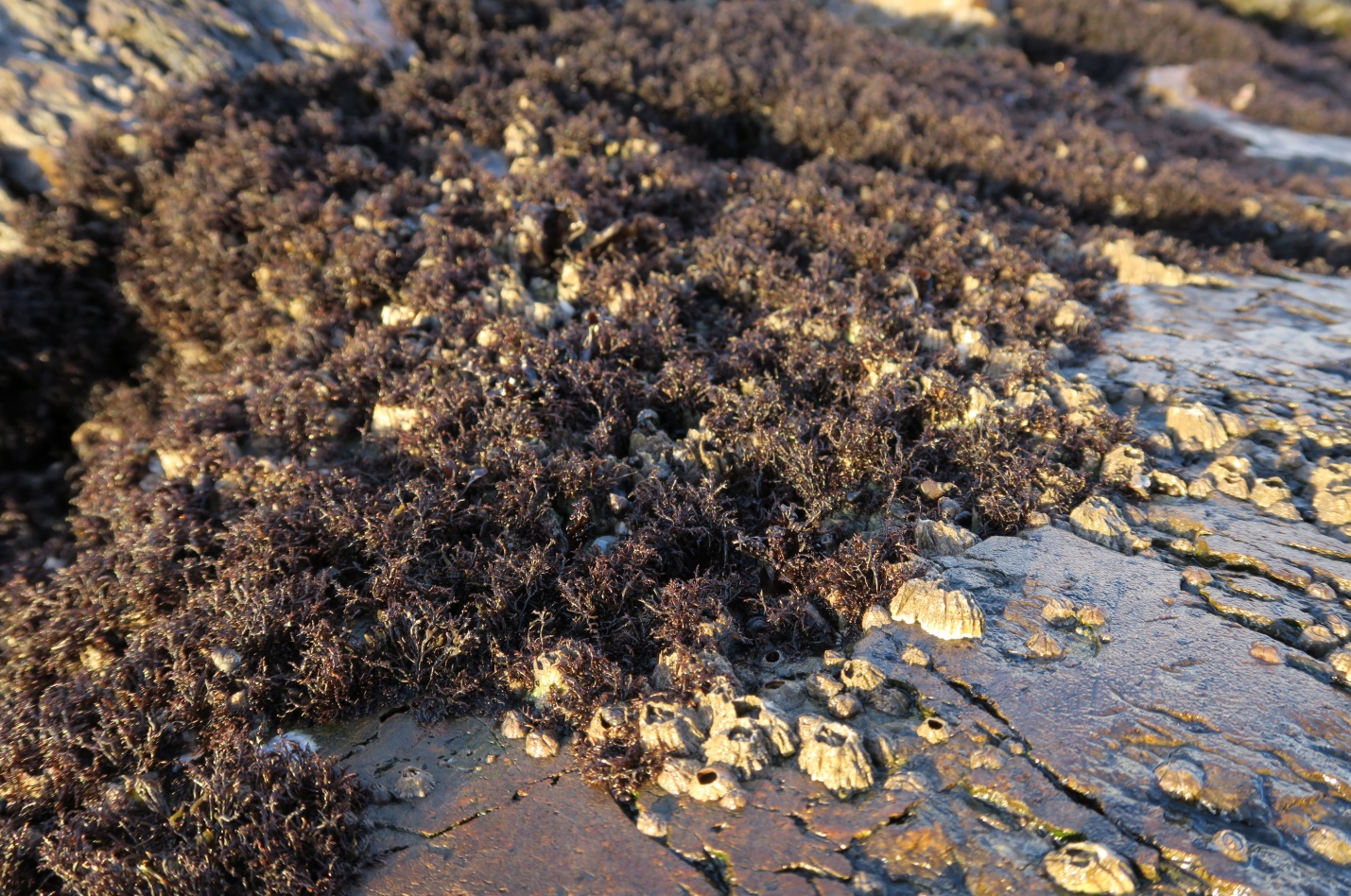
Figure 3: Endocladia muricata – Nail Brush Seaweed – shown here in rather stark conditions; it is growing alongside acorn barnacles, Chthamalus dalli. Like Endocaldia, acorn barnacles are inhabitants of the splash zone and they live much of their life “high” and dry”, persisting with minimal sea water hydration and nourishment. Harling Point, Juan de Fuca Strait, B.C., Canada. January 8, 2021. Photo ID 27344 ©Seaweedwhisperings.com
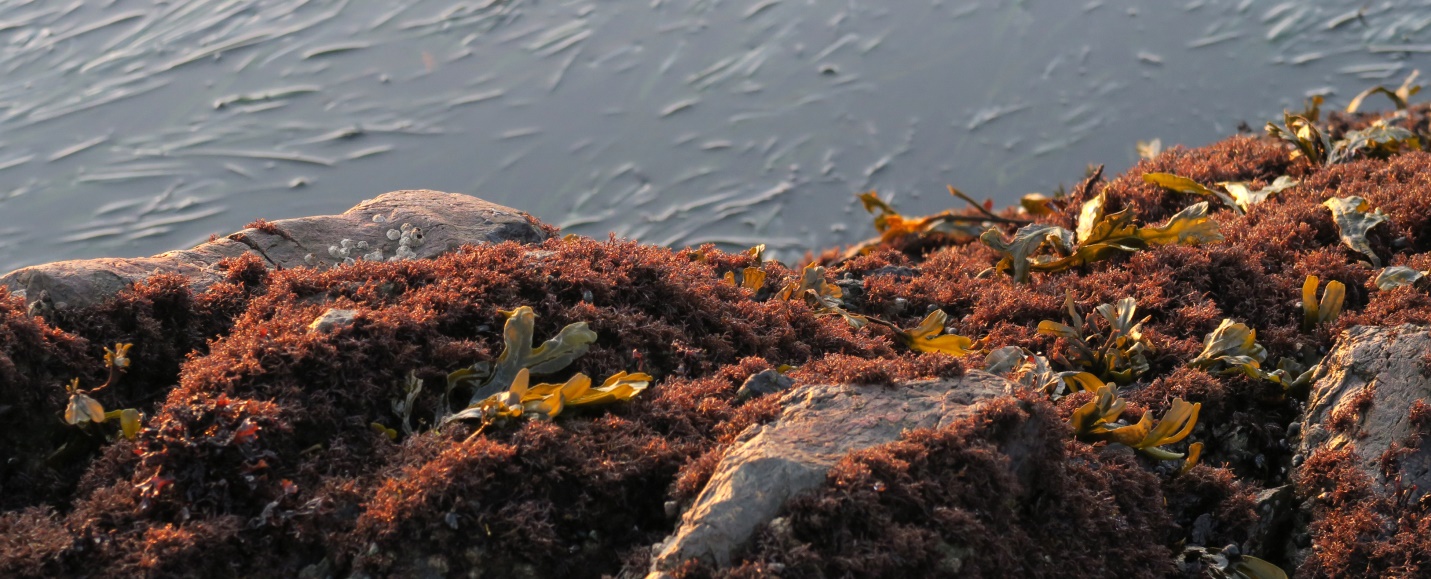
Figure 4: The typically inconspicuous carpet of Endocladia muricata is lit up here like a reddish brown “fur” by the low golden rays of the setting winter sun. Some leafy olive green blades of Fucus distichus are also pictured. Harling Point, Juan de Fuca Strait, B.C., Canada. January 8, 2021. Photo ID 27345 ©Seaweedwhisperings.com
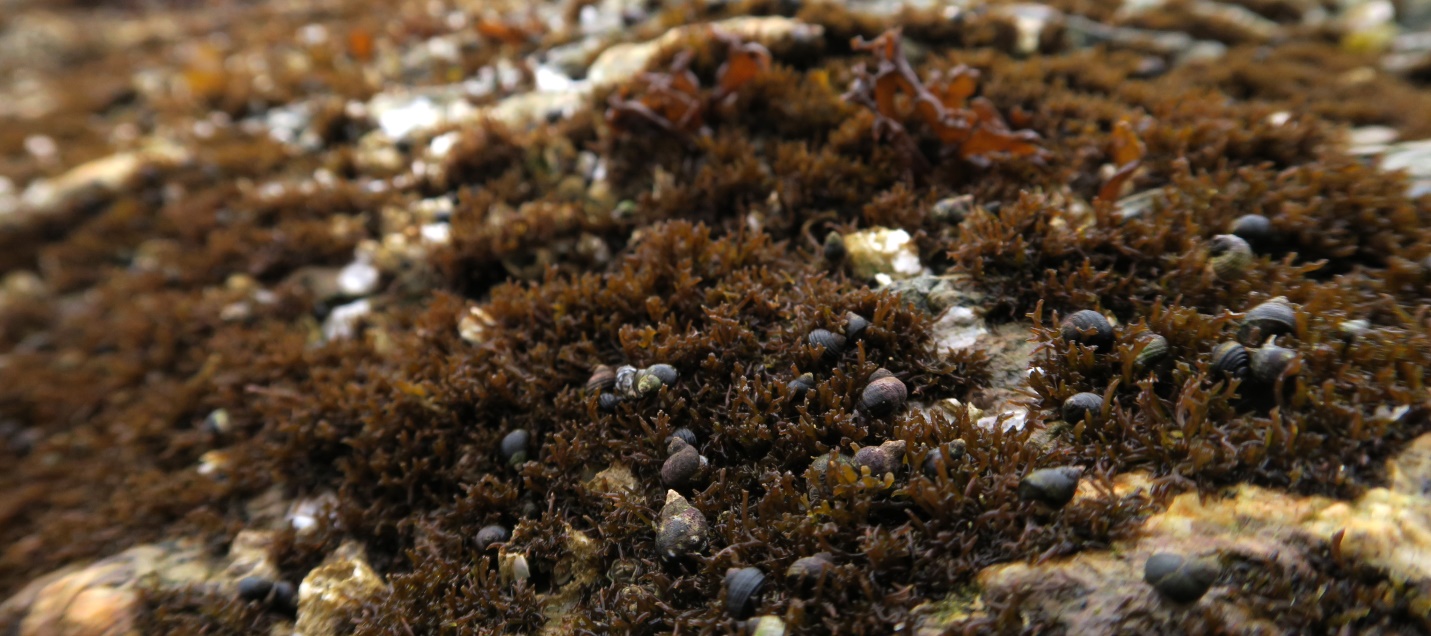
Figure 5: Nail Brush Seaweed has a high caloric value and is grazed by herbivores such as the periwinkle snails as seen here. August 31, 2020. Photo ID 27346 ©Seaweedwhisperings.com
Discussion:
After completing our first immersion with this seaweed, Person 2 then noted some dreams associated with the seaweed. The dreams were dotted throughout the night / early morning. While they were occurring they never had the gravitas to inspire making specific notes of them. It was almost as if each was meant to be washed away by the next one. The dreams all seemed to be of almost no consequence, short snippets, happenings with various people and in various settings. There were no strong emotions that stood out but they weren’t devoid of emotion either. The feeling of the night’s dreams was almost like a film-maker did a documentary of pieces of various events and put them all together in a random collection – it was an objective viewpoint, matter of fact, and the result was a collection that really had no overall theme or even much interest.
The thought occurred – was I dreaming the dreams of others? Simultaneously I thought, does this happen with Endocladia muricata? Living in such extensive communities, shoulder to shoulder in contiguous mats of alga, isn’t it probable that it would be very difficult to NOT know the happenings, the thoughts, possibly even the dreams of your many nearby neighbors?
Could being so closely associated and grounded to the very same bedrock give this seaweed a conduit for ‘accidental’ communication, or at minimum the need for a strong personal barrier to keep what is yours “in” and what belongs to others “out”?
The dreams seeming to be of “not much interest” also portrays what was felt with Endocladia in that externally it can seem “completely indifferent” to the happenings around it. Could it be that in the dream state, this indifference is retained even if perceptions about others is somewhat increased?
Person 1 tried to “go deeper” a few times with this seaweed and found he was not particularly interested in interacting with Endocladia muricata; Nail Brush Seaweed comes across as being too self-absorbed, thus uninteresting to others he found.
Interestingly, though, what interaction that does occur can be friendly. This seaweed has got that fuzzy warm exterior, especially when seen from the distance, but that’s it – the warmth doesn’t extend to deeper connections. You can’t quite say they’re antisocial, it’s just you’re not going to get to know them better without an invitation, and even then it’s tricky. Remembering all those tiny ‘spines’ on the exterior, well, the feeling is that Endocladia needs to be armoured up and defensive to protect against anyone approaching them too closely.
There was a feeling in this seaweed of the energy being self-absorbed. The ability to focus on your current challenge means that you can often be oblivious to the bigger picture or even other parallel challenges. There’s strong persistence, very strong, but only in one previously determined goal or expression. The narrow focus might mean Endocladia eventually ‘succeeds’ in its efforts only to find that while they were so busily engaged in their goal, the context for their own efforts has shifted significantly – stealing away much of the anticipated value and satisfaction.
It feels like only a slight shift might be needed. This ability for determined focus is a trait that can be useful, even admirable; if Endocladia could just “lift their heads up” from time to time and check the trends and conditions, reassess and update their awareness of their situation so to speak, then they could apply their skills in a more adaptable manner and likely find a more fulfilling way of being.
Perhaps, though, it is difficult to stretch to new vantage points and new perspectives when you are scoured routinely by the surf. Probably this is why ‘endo’- ‘clad’-ia wears its ‘clothing’ on the inside. Worn on the exterior, it would be torn to tatters, literally eroded away by the elements. And the exterior is guarded with conical-shaped spines, like a coat of armour. Most armour does not flex and stretch; it is rigid and restricting. This certainly means any flexibility can be only occurring in the interior realms – maybe this is where new vantage points are found.
Being abraded by your environment and the crashing surf, being broken off by heavy footprints or passage of marine mammals on hot days, being eaten by congregations of voracious herbivores – this abrasion and wearing down and trimming down that happens in your life from many corners, this means life can often be pretty stark, Nail Brush Seaweed. You hold few reserves, don no fancy dress and take no elaborate strategies with form or structure; in short, you function well by paring down to the basics.
In meeting their challenges, Endocladia has only sufficient resources, in fact it can seem quite desolate, their circumstances, as if they’re running on the fine line between making it work or total depletion, exhaustion and failure. This might also be why interactions with others, relationships, often are minimal. There’s simply not much extra energy, and if not seen to be directly relevant to the current needs, well, exploring such interactions is simply a luxury that cannot be indulged.
Where Endocladia grows can also make it easy to avoid many interactions as in its habitat it can be rather unobtrusive. Even with large groupings growing on the high intertidal rocks, in many situations Nail Brush Seaweed is not really noticed. It’s out “in plain sight”, but except for short intervals of lovely golden low light conditions (such as the day of our Whispering) it does NOT stand out. Few are attracted to this seaweed and most walk right on over it to look at other more outstanding species or views. It seems that this is totally fine for Endocladia, it serves their purpose well and there is not much indication they’d wish for greater recognition of this nature.
The one way this seaweed is notable is when there is large groupings of it, but even then, it’s rather like moss on the forest floor that is not really seen as all the ferns and shrubs and wildflowers and trees are much showier and attract attention.
So, if you “show” at all, Endocladia, it is as a group, but even that group rarely does so and is largely unseen. And of course also, Endocladia, there is another place where you can quietly “show”, and that is on the inside, within yourself which of course is by definition actually not “showy”.
As a grouping, you also don’t create much ‘group energy’ and it feels like this is because you are really a collection of quite private individuals. There is not a strong connection between group members and this, too, contributes significantly to your groups’ rather inconspicuous presence as a whole.
Being unnoticed probably gives safety. There is an environmental advantage to group living which you tolerate for its practicality, but you really are not “group” beings. Each member keeps their character held within. Yes, this really is a collection of very private individuals who live side by side in a very tough habitat.
And, yes, Endocladia is adapted to live in a harsh or stark extreme of the intertidal environment; it is exposed to air and lives a more ‘terrestrial’ life than almost any other seaweed in our area. The tide only comes to Nail Brush at the extremes of its daily cycles, and this means this alga has less time than almost any other seaweed to grasp what it needs from the revitalizing ocean water. This introduces the quality of “must do” to their nature; a type of intensity that is linked to the awareness that opportunities are very limited. They must make the most of it; before very long the tide retreats once again. For Endocladia they can feel never quite sated, always that a bit more would be better..., but that doesn’t ever really happen. With this perpetual reality there grows an increased emphasis to seize whatever the current opportunity presents, and to do so with focused intensity and industry that almost approaches a compulsion – there is an irresistible urge, they must meet the challenge, again and again. And they must not waste a single moment.
From the tide and the ocean swells come the nutrients and the hydration that makes possible any physical flexibility Endocladia can possess. But largely their flexibility seems to be not much in evidence – perhaps it is held in the interior, along with much of their character. What is primarily evident is the firmer, more rigid, and at times even brittle outside armour, as inevitably that is what serves best in their day to day challenges.
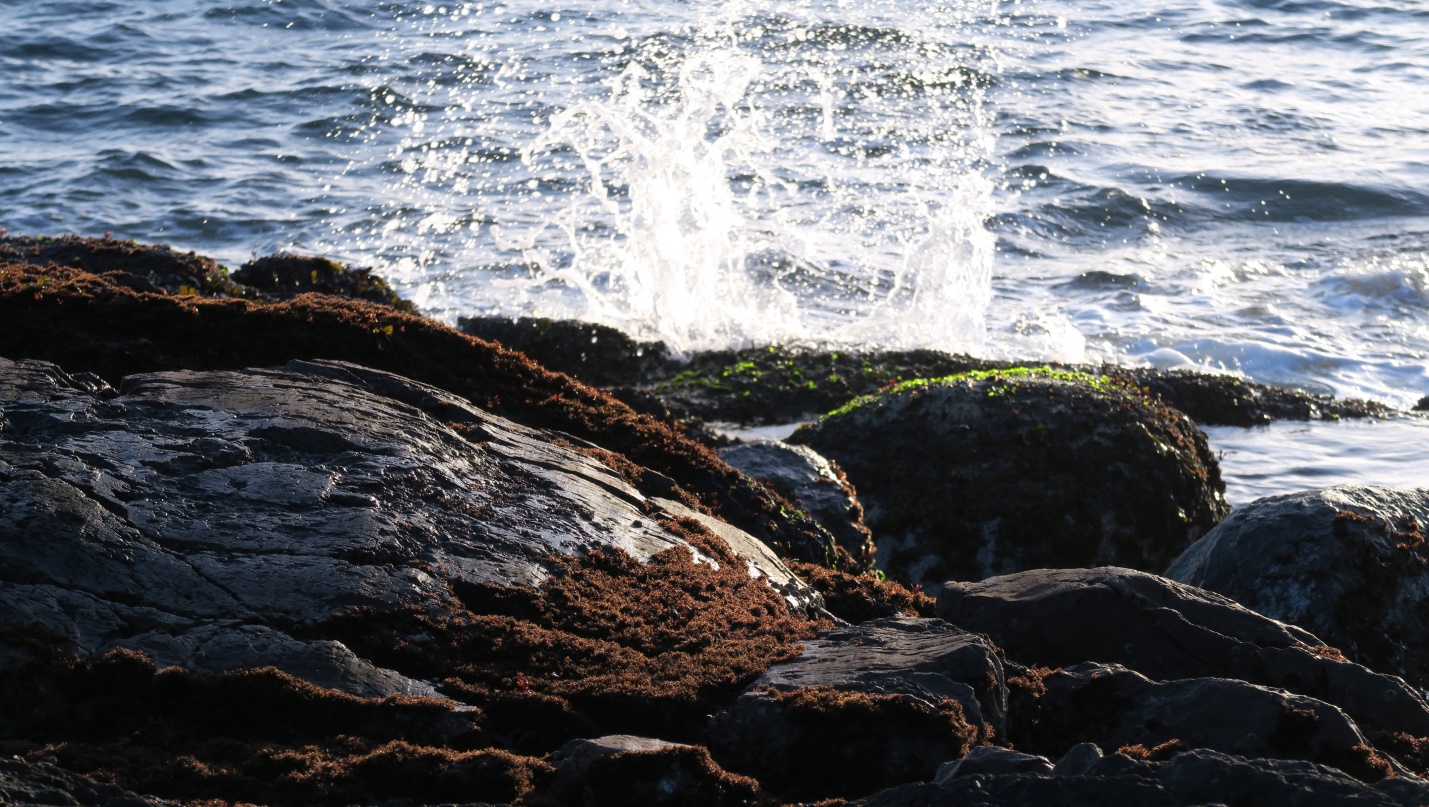
Figure 6: Endocladia muricata, commonly known as Nail Brush Seaweed or Sea Moss, is seen here as a reddish brown mat growing close and low on the bedrock at Harling Point. Surf crashed rocks and the splash zone of high and exposed intertidal areas are favored habitats for this red alga. January 8, 2021. Photo ID 27347 ©Seaweedwhisperings.com
Biology & Natural History Information:
Description:
Nail Brush Seaweed is widely ranging colored seaweed, it may be pinkish to almost black (and ranges through yellowish to reddish brown and dark brown) that grows in small, tight, bushy tufts. It attaches to rocks, mussels, barnacles, and almost any hard surface by a small, discoid holdfast. In areas the profusely branched tufts can grow densely enough to form wiry mats. Height varies but is usually less than 8 cm. The branching pattern is somewhat dichotomous; that is, at each fork, both branches are about the same size (about 0.5mm in diameter). When wet, Nail Brush Seaweed is a yellow to reddish brown; when dry this seaweed can desiccate to a brittle hardness and looks brownish black in color. Examining Nail Brush Seaweed with a 10X field lens, you will observe prominent conical “spines” along its length. These spines are really just very short (and soft-textured) branches and they are a distinguishing identification feature of this alga.
Habitat:
Nail Brush Seaweed is abundant on exposed rocks in the mid to high intertidal region. It lives higher in the intertidal region than most persistent fleshy red alga. Its ability to survive in an environment predominantly terrestrial (it spends more time out of the water than submerged) is attributed to its bushy nature which enables it to retain moisture during low tide, thereby reducing overheating and desiccation. Endocladia is usually found in association with the small barnacle, Chthamalus or Balanus: it is also a preferred settling site for larvae of the Pacific Blue Mussel (Mytilus trossulus).
Pacific Coast Distribution: Amchitka Island (Aleutian Islands), Alaska to Punta Santo Tomás, Baja California, Mexico.
Remarks:
Nail Brush Seaweed likes sunlight and can withstand high variations in temperature and is usually exposed to air and sun much of the day when it can lose a good portion of its water yet still photosynthesize. It has an isomorphic life history, so gametophytic individuals are indistinguishable from tetrasporophytes. Experiments performed in central California showed that both phases had similar rates of both respiration and photosynthesis whether in or out of water, but these rates do decrease with increasing loss of water from the tissues.
When the tide goes out, Nail Brush Seaweed stands erect on the rocks and can become very crisp and brittle. In this condition stepping on the tufts will smash them thus beachcombers and phycologists are advised to take care to step around them. When dry it has a rough, wiry texture that resembles a dish scrub pad and this has given rise to several of the common names for this alga. Nail Brush Seaweed has the ability to rehydrate quickly once the tide rises back to their level.
Individuals collected from southern British Columbia/norther Washington State were able to withstand a week of immersion in water at 28˚C making this one of the most thermally tolerant of Pacific Northwest algae.
Nail Brush Seaweed is sometimes grazed by limpets and other herbivores, which benefit from its high caloric value (4.10 calories per gram of dry weight).
Classification:
Phylum: Rhodophyta
Class: Florideophyceae
Order: Gigartinales
Family: Endocladiaceae
Genus: Endocladia
Species: Endocladia muricata (Endlicher) J.Agardh 1847
Former names: Gigartina muricata Postels & Ruprect 1840; Basionym, Gelidium muricatum Endlicher.
Other Common names: Sea Moss, Nail Brush, Nailbrush, Wire Brush Alga, Brillo-pad Seaweed.
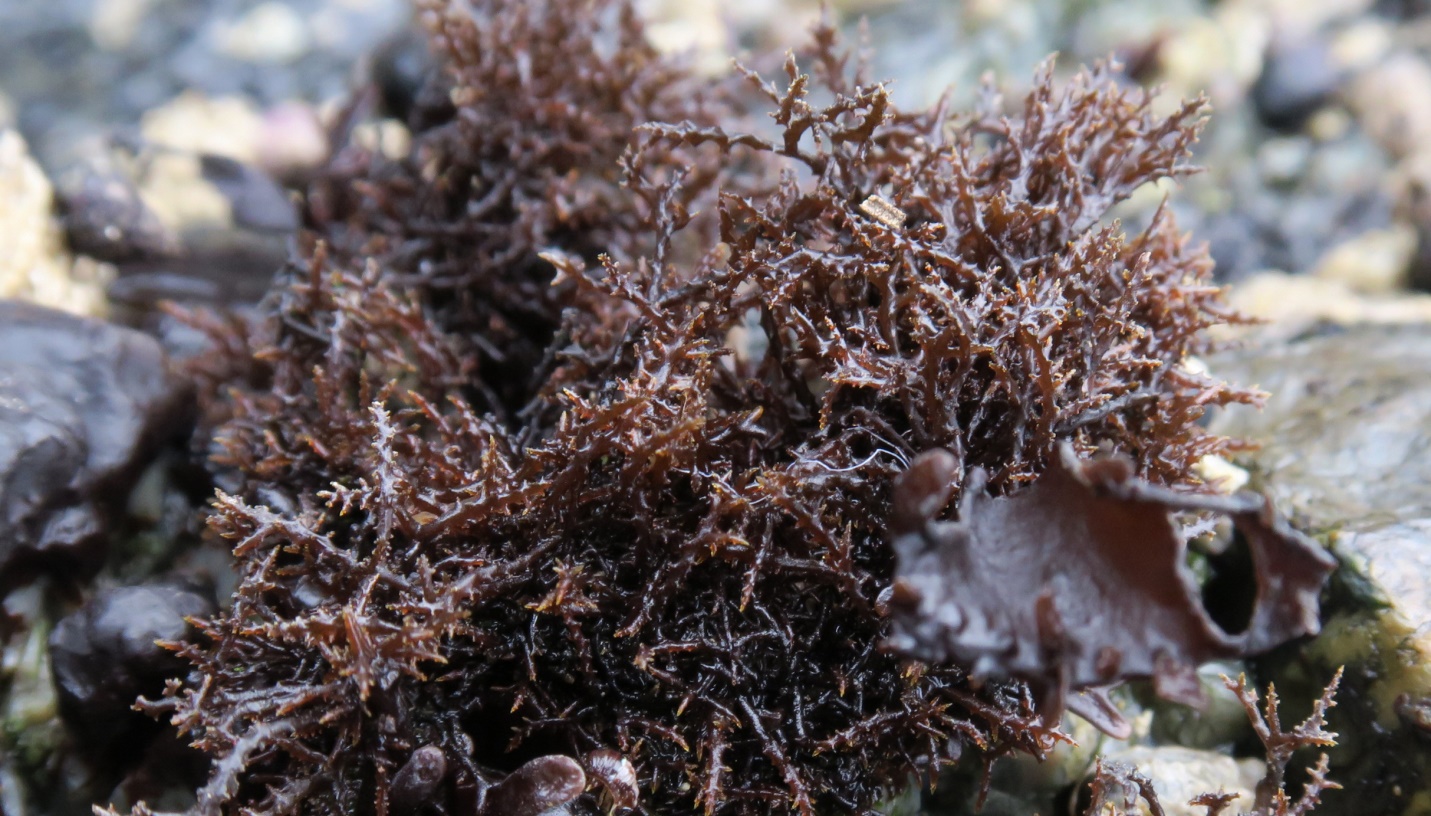
Figure 7: Endocladia muricata – a closer ‘individual’ view reveals the conical “spines” of this bushy, tuft forming algae. January 8, 2021. Photo ID 27348 ©Seaweedwhisperings.com
![]()